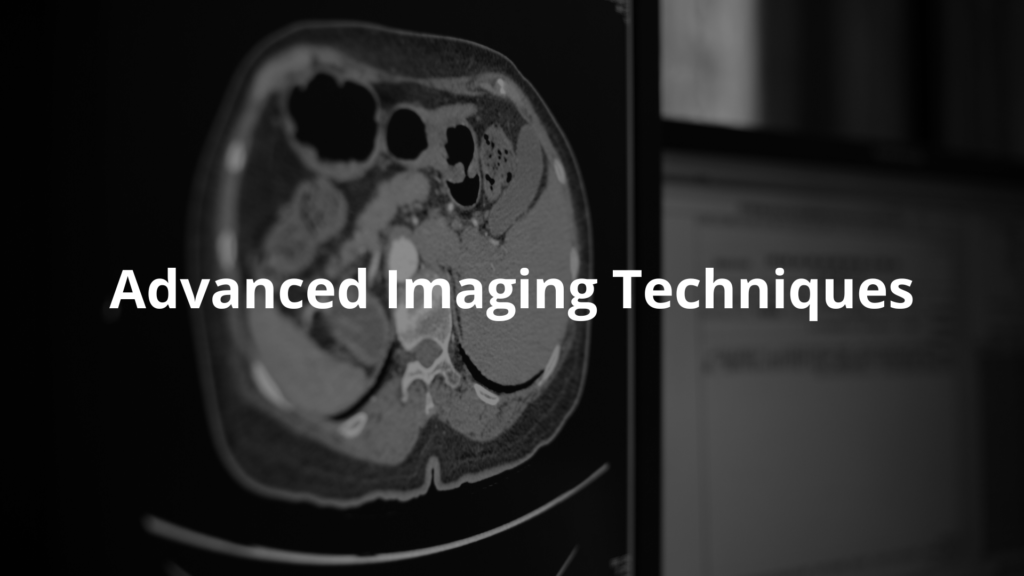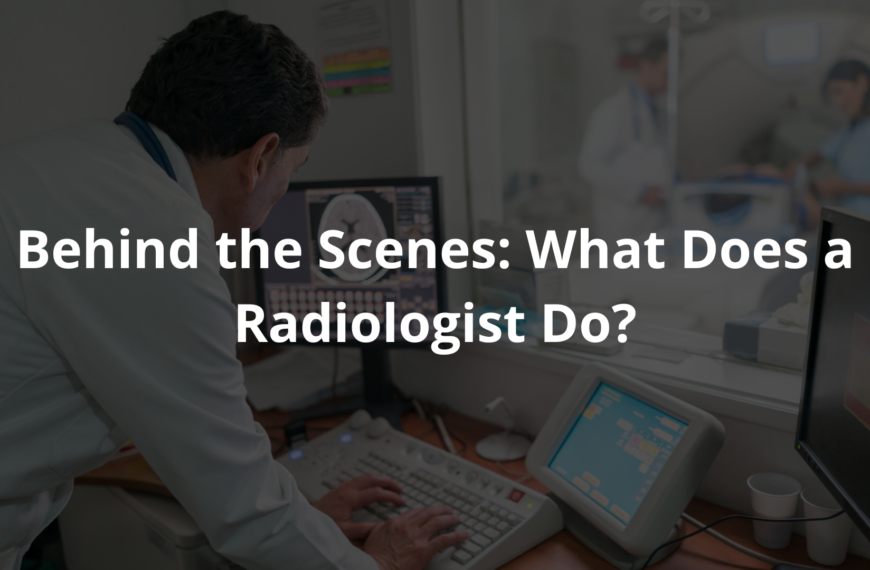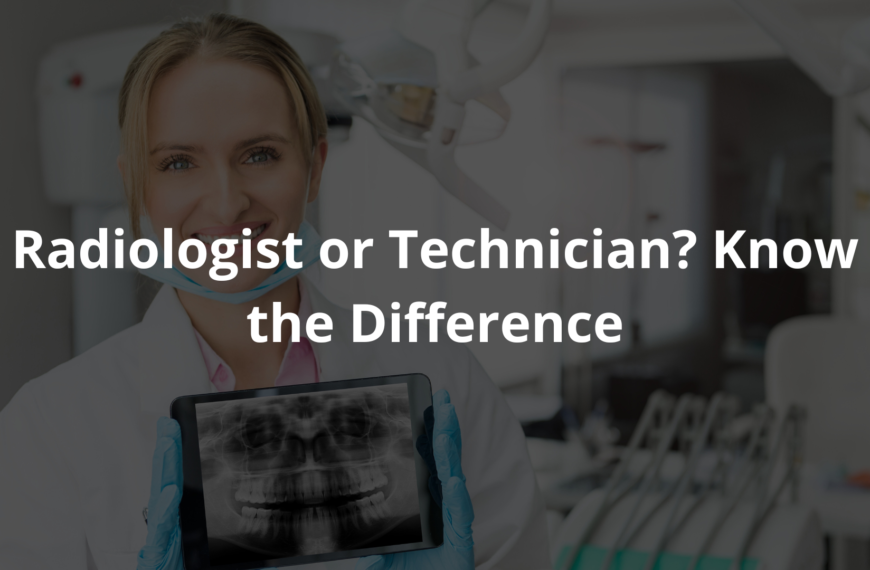Radiologists are crucial to healthcare, using CT scans and MRIs to help doctors detect diseases early and make 80% of medical decisions. Learn more!
Radiologists play a big role in healthcare, especially in Australia. They use special imaging tests, like CT scans and MRIs, to help doctors look inside the body. This is important for finding illnesses early and can save lives. In fact, about 80% of decisions made by doctors rely on the images that radiologists interpret.
That’s a really big deal! Without radiologists, diagnosing many conditions would be much harder. They are vital in making sure patients get the right care. Keep reading to find out more about how radiologists contribute to patient health and safety.
Key Takeaway
- Radiologists help find diseases early through imaging tests.
- They work closely with doctors to create treatment plans.
- Their expertise in medical imaging can save lives.
Understanding the Role of Radiologists
Radiologists are like detectives in the medical world, quietly helping doctors figure out what’s going on inside our bodies. In Australia, about 80% of medical decisions depend on the pictures they study. These pictures come from machines like X-rays, CT scans, MRIs, and ultrasounds. Each one has a job. X-rays are great for looking at bones, while MRIs are better for soft tissues, like the brain or muscles.
They don’t work alone, though. Radiologists team up with GPs and specialists to make sure patients get the right treatment. They also keep safety in mind, using just enough radiation to get clear images without putting anyone at risk.
As more people in Australia get older, radiologists are busier than ever. They’re always learning new things, keeping up with the latest tools and methods. Their work even helps improve imaging technology, making healthcare better for everyone.
So, while you might not see them much, radiologists are a big part of what keeps us healthy.
Advanced Imaging Techniques

Radiologists have a bunch of tools to peek inside our bodies and figure out what’s going on. Each one is like a different lens, showing doctors what they need to see. Here’s a breakdown of the main ones:
- X-rays: These are fast and great for checking bones. If you’ve ever broken an arm or leg, chances are you’ve had one.
- MRIs: Magnetic Resonance Imaging uses magnets (yep, magnets!) to get super clear pictures of soft tissues like muscles, the brain, or organs. They take longer, though, sometimes up to an hour.
- CT scans: These are like a 3D version of X-rays. They’re brilliant for spotting things like tumours or internal bleeding.
- Ultrasounds: These use sound waves to create live images. They’re often used during pregnancy to see how a baby’s growing.
Radiologists pick the right test depending on what’s needed. For example, if you’ve got a sore knee, an MRI might show if it’s a torn ligament. If you’ve had a car accident, a CT scan can quickly check for internal injuries. Each technique has a purpose, helping doctors find answers and treat patients better. It’s not magic—it’s science!
Working with Other Healthcare Professionals
Radiologists don’t work alone. They’re part of a team, and it’s a big one(1). This team includes general practitioners, surgeons, and sometimes even specialists like oncologists or neurologists. When a radiologist studies an image—like an X-ray, MRI, or CT scan—they don’t just keep the findings to themselves. They share what they see with the rest of the team. This sharing is what helps decide the next steps for the patient.
It’s a bit like a group of detectives working on a case. Each person has a different skill. The radiologist’s skill is spotting things in images that others might miss. If they notice something unusual, like a shadow on a lung or a fracture in a bone, they let the team know. Then, the team decides together what to do next. Maybe it’s surgery, maybe it’s more tests, or maybe it’s just keeping an eye on things.
This teamwork is what makes patient care better. Everyone’s role matters. When radiologists and doctors communicate well, patients can trust that they’re getting the right care. It’s all about working together to solve the puzzle of health.
Continuous Learning and Adaptation
Radiology feels like it’s always on the move. Machines get smarter, and techniques get better. Radiologists have to keep up, which means they’re always learning. They go to training sessions, read studies, and attend conferences to stay sharp. It’s not just for fun—it’s so they can give patients the best care possible.
Think about it like this: if you play a sport, you’ve got to practice new skills to stay good. Radiologists do the same, but instead of sports, it’s with things like MRIs and CT scans. For example, they might learn how to use a new 3T MRI machine (that’s a super-strong one) or a new way to spot tiny details in an X-ray. It’s all about improving.
This constant learning isn’t easy, but it’s necessary. Medical technology doesn’t wait around, and neither can they. It’s their way of staying ready to help, no matter what the next challenge is.
Impact on Patient Outcomes
Finding diseases early can change everything for patients. Take breast cancer, for example. If it’s caught early with imaging tests, patients often have more treatment options and a better chance of survival. That’s where radiologists come in—they’re like detectives, spotting problems before they grow worse.
Radiologists don’t just look at pictures; they analyse them closely. They can find tiny clues in scans, things most people wouldn’t even notice. When they spot something unusual, it can lead to early action. And early action often means less intense treatments and a higher chance of getting better.
It’s not just about technology or fancy machines. It’s about helping people live longer and healthier lives. Early diagnosis really can make all the difference. Radiologists are a key part of this process, quietly saving lives one image at a time. So, next time you hear about a scan, remember—it’s more than a picture. It’s hope.
The Digital Shift in Radiology
Radiologists are working differently now because of technology(2). Many clinics and hospitals are using digital imaging systems, which let doctors share images quickly. This means patients can get diagnosed faster, which is really important for their health.
Think of it like sending an email instead of mailing a letter. With digital imaging, doctors can see X-rays or MRIs instantly, no matter where they are. If a radiologist spots something serious, they can tell the doctor straight away. This can make a big difference, especially in emergencies.
These systems also help doctors work together better. When everyone has the same information at the same time, decisions can be made faster. It’s not just about speed, though—it’s about making sure patients get the right care when they need it.
For radiologists, learning to use these systems well is key. If you’re in healthcare, it’s worth understanding how digital imaging works—it could save lives.
Radiation Safety Practices
Radiologists care a lot about keeping patients safe. They work hard to make sure the amount of radiation used in imaging tests, like X-rays and CT scans, is as low as possible. This matters because while these tests help doctors see inside the body, too much radiation can sometimes be harmful. It’s a bit of a balancing act, really.
To protect everyone, radiologists wear special gear, like lead aprons, and follow strict safety rules. They’re trained to always think about the benefits of a test compared to the risks. For example, if a scan can help find a serious problem, the small amount of radiation might be worth it. But they’ll never use more than needed.
Patients should know that radiologists are experts at this. They’ve studied for years to learn how to keep risks low while still getting clear images. So, if you ever need an imaging test, you can trust they’re doing their best to keep you safe.
Patient Interaction and Trust
I’ve always thought about how scary hospitals can feel. The machines, the tests, the waiting—it’s a lot. But sometimes, a kind voice makes all the difference. Radiologists, the doctors who read imaging tests like MRIs and X-rays, often meet with patients to explain what’s going on(3). They might not always do it, but when they do, it helps. A lot.
Picture this: You’re about to have an MRI, and you’re nervous. The machine looks huge, and you don’t know what’s going to happen. Then, the radiologist comes in, sits down, and explains everything. They tell you how the machine works, how long it’ll take, and that it’s safe. Suddenly, it’s not as scary anymore. That’s trust being built right there.
When patients trust their doctors, they feel calmer. They’re more likely to follow instructions, like holding still during a scan. And that means better test results. Radiologists might not always be the ones you think of when it comes to patient care, but their role in building trust is huge. If you ever feel nervous about a test, don’t be afraid to ask questions. A good radiologist will take the time to help you understand.
Contribution to Research and Development
Radiologists don’t just look at images all day (though that’s a big part of their job). Many of them spend time doing research too. They’re always trying to figure out how to make imaging better—sharper pictures, clearer details, faster results. It’s like they’re solving puzzles to help doctors and patients.
For example, some radiologists study new ways to use MRI or CT scans. They might test how to spot diseases earlier or how to make the machines safer for people. Others work on improving how images are read, maybe using computer programs or artificial intelligence to catch things a human eye might miss.
This research isn’t just for fun (though I bet it’s pretty interesting). It’s about helping people. Better imaging means doctors can find problems sooner, treat them faster, and save lives. Radiologists are doing more than sitting in dark rooms—they’re shaping the future of medicine.
Growing Demand for Radiology Services
Source: Radiology Frameworks.
Radiologists are becoming more important as Australia’s population gets older. Older people often need more medical tests, like X-rays or MRIs, to figure out what’s wrong. This means more radiologists are needed to look at these images and help doctors make decisions. It’s like putting together a puzzle, where every piece matters.
Radiologists don’t just sit in dark rooms looking at screens (though they do that a lot). They work with doctors, nurses, and other medical staff to make sure patients get the right treatment. For example, if someone has a broken bone, a radiologist can quickly confirm it so treatment can start sooner. Or if there’s something more serious, like cancer, they help spot it early.
As the demand for healthcare grows, so does the need for skilled radiologists. If you’re thinking about a career in medicine, this might be something to consider. It’s a job that really makes a difference.
FAQ
What is the full form of “ESR”?
The full form of “ESR” is “Erythrocyte Sedimentation Rate”. This is a common blood test that can help detect inflammation in the body, which can be useful for diagnosing and monitoring various medical conditions.
What is the key role of radiologists in healthcare?
Radiologists play a crucial role in healthcare by using advanced imaging techniques like CT scans, MRI, and PET scans to help diagnose and treat a wide range of medical conditions. They are skilled in interpreting these medical images and providing insights to other healthcare providers to determine the best course of action for the patient.
How do radiologists use CT and MRI scans?
Radiologists employ CT (computed tomography) and MRI (magnetic resonance imaging) scans to obtain high-quality images of the inside of the body. These imaging techniques allow them to identify medical issues, such as tumors, injuries, and other abnormalities, which can then guide the treatment of diseases like cancer and other health conditions.
How do radiologists use PET scans?
Radiologists utilize PET (positron emission tomography) scans to create detailed images of the body’s organs and tissues. These scans can help detect and monitor various medical conditions, including cancer, heart disease, and neurological disorders, by identifying changes in the body’s cellular function and metabolism.
What is the “ESR” test for patients?
The “ESR” or Erythrocyte Sedimentation Rate test is a common blood test that can help detect inflammation in the body. Radiologists may order this test as part of a patient’s diagnostic workup to assist in identifying the underlying cause of their medical condition and guide the appropriate course of action.
How do radiologists ensure high-quality imaging services?
Radiologists are dedicated to providing high-quality imaging services to their patients. They stay up-to-date with the latest advancements in medical imaging technology and techniques, ensuring they can deliver accurate and reliable diagnostic results. They also work to minimize radiation exposure and prioritize patient safety throughout the imaging process.
How do radiologists contribute to public health?
Radiologists play a crucial role in public health by using their expertise in medical imaging to help detect and diagnose various diseases, including cancer, at early stages. This early detection can lead to more effective treatments and better health outcomes for patients, ultimately improving overall public health and well-being.
How do radiologists collaborate with primary care providers?
Radiologists work closely with primary care providers to assist in the diagnosis and management of their patients’ medical conditions. They provide valuable insights based on their interpretation of medical images, which helps primary care providers determine the most appropriate course of treatment for their patients.
How do radiologists use medical imaging to treat diseases?
Radiologists utilize a wide range of medical imaging techniques, such as CT, MRI, and PET scans, to help diagnose and monitor various medical conditions. These images provide crucial information that guides healthcare providers in developing the most effective treatment plans for their patients, ultimately helping to improve patient outcomes.
How do radiologists contribute to cancer screening and early detection?
Radiologists play a crucial role in cancer screening and early detection by conducting imaging exams, such as mammograms for breast cancer and CT scans for lung cancer. Early detection of these diseases can significantly improve the chances of successful treatment and patient outcomes.
How do radiologists minimize radiation exposure for patients?
Radiologists are dedicated to ensuring patient safety by minimizing radiation exposure during medical imaging exams. They carefully optimize imaging protocols, use the lowest possible radiation doses, and employ various techniques to protect patients from unnecessary radiation exposure.
How do radiologists collaborate with other medical professionals?
Radiologists work closely with a wide range of medical professionals, including primary care providers, surgeons, oncologists, and other specialists. They provide their expertise in interpreting medical images and offer valuable insights that help guide the overall care and treatment of patients.
How do radiologists use medical imaging to diagnose and monitor diseases?
Radiologists utilize a variety of medical imaging modalities, such as CT, MRI, and ultrasound, to obtain detailed information about the internal structures and functions of the body. They use this information to help diagnose, monitor, and guide the treatment of various medical conditions, contributing to improved patient outcomes.
How do radiologists contribute to minimally invasive procedures?
Radiologists play a crucial role in minimally invasive medical procedures by using their expertise in medical imaging to guide the placement of instruments and devices within the body. This helps reduce the risk of complications and promotes faster recovery times for patients.
How do radiologists stay up-to-date with the latest advancements?
Radiologists are dedicated to staying at the forefront of their field. They actively participate in continuing medical education, attend conferences, and engage with the latest research and publications to ensure they are providing the highest quality of care and utilizing the most advanced imaging technologies and techniques.
How do radiologists ensure patient safety and privacy?
Radiologists prioritize patient safety and privacy throughout the imaging process. They follow strict protocols and guidelines to minimize radiation exposure, protect sensitive patient information, and ensure that the imaging environment is secure and comfortable for the patient.
How do radiologists contribute to the education of medical students?
Radiologists play a vital role in the education of medical students by providing them with hands-on training in medical imaging and interpretation. They serve as mentors and instructors, sharing their expertise and guiding the next generation of healthcare professionals in the effective use of imaging techniques.
How do radiologists use creative commons and open access resources?
Radiologists often utilize creative commons and open access resources, such as research articles, educational materials, and medical imaging datasets, to stay informed about the latest advancements in their field. These resources help them enhance their knowledge and improve the quality of care they provide to their patients.
How do radiologists use Google Scholar and other academic databases?
Radiologists frequently use academic databases like Google Scholar to access high-quality, peer-reviewed research articles and studies relevant to their field. They use these resources to stay up-to-date with the latest developments, inform their clinical practices, and contribute to the advancement of medical imaging and patient care.
How do radiologists contribute to the field of medical imaging?
Radiologists are at the forefront of medical imaging research and innovation. They collaborate with researchers, engineers, and other healthcare professionals to develop new imaging technologies, techniques, and applications that improve the accuracy, efficiency, and safety of diagnostic and therapeutic procedures.
How do radiologists work with radiation oncologists?
Radiologists and radiation oncologists often collaborate closely to provide comprehensive cancer care. Radiologists use their expertise in medical imaging to help identify and locate tumors, while radiation oncologists utilize that information to develop and deliver targeted radiation therapy treatments.
How do radiologists use their insights to enhance patient care?
Radiologists leverage their extensive knowledge and expertise in medical imaging to provide valuable insights that help guide the overall care and treatment of patients. They work closely with other healthcare providers to interpret imaging findings, inform diagnosis, and develop the most effective course of action for each patient.
How do radiologists contribute to the field of nuclear medicine?
Radiologists play a crucial role in the field of nuclear medicine, which involves the use of radioactive materials to diagnose and treat various medical conditions. They collaborate with nuclear medicine specialists to interpret the results of nuclear imaging studies, such as PET and SPECT scans, to provide comprehensive patient care.
How do radiologists uphold radiation safety standards?
Radiologists are dedicated to upholding the highest standards of radiation safety for both patients and healthcare professionals. They follow strict protocols and guidelines established by organizations like the American College of Radiology and the European Society of Radiology to minimize radiation exposure and ensure the safe use of medical imaging technologies.
How do radiologists work with the Royal Australian and New Zealand College of Radiologists?
Radiologists in Australia and New Zealand often collaborate with the Royal Australian and New Zealand College of Radiologists (RANZCR) to maintain the highest standards of practice, education, and professional development in their field. This partnership helps ensure that patients receive the best possible care from knowledgeable and skilled radiologists.
Conclusion
Radiologists are super important in Australia’s healthcare system. They look at medical images, like X-rays and scans, to help doctors find problems. By catching health issues early, they help patients get better treatment. Radiologists work closely with other doctors to make sure everyone gets the care they need. As time goes on, their role will probably keep growing, which will help improve patient care for all Australians. They really make a difference in people’s lives!
References
- https://www.olea-medical.com/en/radiology-what-are-the-best-practices-for-collaborating-effectively-with-other-departments/
- https://www.siemens-healthineers.com/en-id/medical-imaging/digital-transformation-of-radiology
- https://radiology.ucsf.edu/blog/seeing-pictures-building-trust-evolving-relationship-between-patient-and-radiologist




